Family: Orussidae
Family common name:parasitic woodwasps
Subfamily: Ophrynopinae
Genus: Kulcania Benson, 1935
Subgenera: none
The Orussidae are small, mostly black sawflies with cylindrical bodies and globular heads (Eaton and Kaufman 2007Eaton and Kaufman 2007:
Eaton ER and Kaufman K. 2007. Kaufman Field Guide to Insects of North America (Kaufman Field Guides). Houghton Mifflin Harcourt. 391 pp.). They are distinctive as the only sawfly family that is parasitic on other insects (Furniss and Carolin 1977Furniss and Carolin 1977:
Furniss RL and Carolin VM. 1977. Western forest insects. United States Deptartment of Agriculture Forest Service Miscellaneous Publication 1339: 1-655.). Current phylogenies of Hymenoptera position the Orussidae as the most closely related extantextant:
in existence; opposite of extinct
sawfly family to the Apocrita, and specifically parasitic wasps (Vilhelmsen 2004Vilhelmsen 2004:
Vilhelmsen L. 2004. The old wasp and the tree: fossils, phylogeny, and biogeography in the Orussidae (Insecta, Hymenoptera). Biological Journal of the Linnaen Society 82: 139-160.).
Kulcania are 8–14 mm in length (Furniss and Carolin 1977Furniss and Carolin 1977:
Furniss RL and Carolin VM. 1977. Western forest insects. United States Deptartment of Agriculture Forest Service Miscellaneous Publication 1339: 1-655.). They share several remarkable morphological characters with other Orussidae, including antennal insertions located extremely low on the face, reduced wing venationvenation:
the network of veins on a wing
, and a relatively long and thin ovipositorovipositor:
the female organ that deposits eggs and is used to drill into plant tissue, located at the apex of the abdomen, made up of the lance and lancet
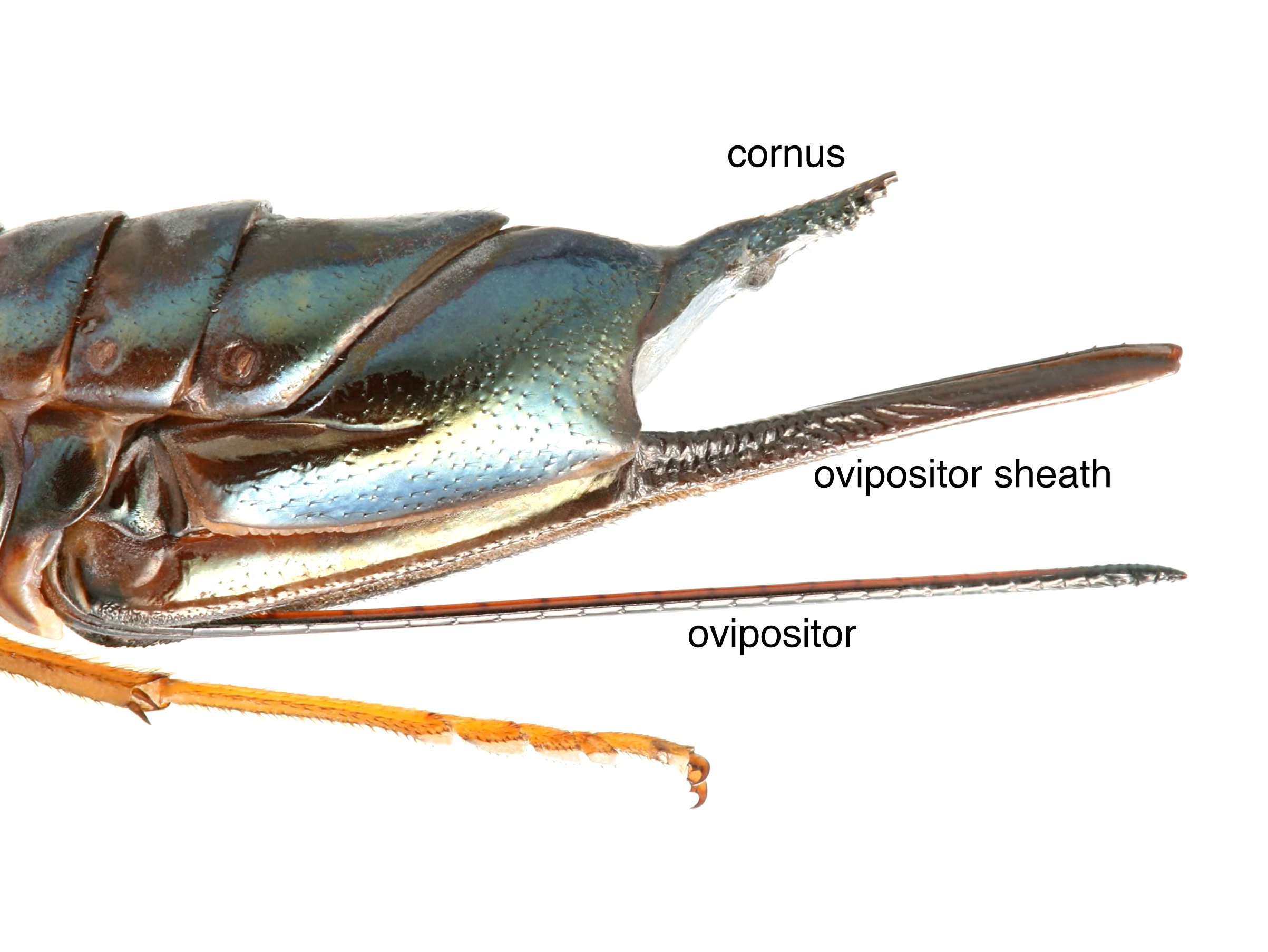 (Vilhelmsen et al. 2014Vilhelmsen et al. 2014:
(Vilhelmsen et al. 2014Vilhelmsen et al. 2014:
Vilhelmsen L, Blank SM, Liu Z, and Smith DR. 2014. Discovery of a new species confirms Oriental origin of Orussus Latrielle (Hymenoptera: Orussidae). Insect Systematics and Evolution 45: 51-91. https://doi.org/10.1163/1876312X-00002087). This genus is relatively rare in collections and little known (Blank et al. 2010bBlank et al. 2010b:
Blank SM, Vilhelmsen L, and Smith DR. 2010b. Ophrynon (Hymenoptera: Orussidae) in California: diversity, distribution, and phylogeny. Insect Systematics amp; Evolution 41: 3-27. https://doi.org/10.1163/139956009X12550095535756).
There are only two described species worldwide, and both are restricted to the New WorldNew World:
the Western Hemisphere; the continents of North and South America
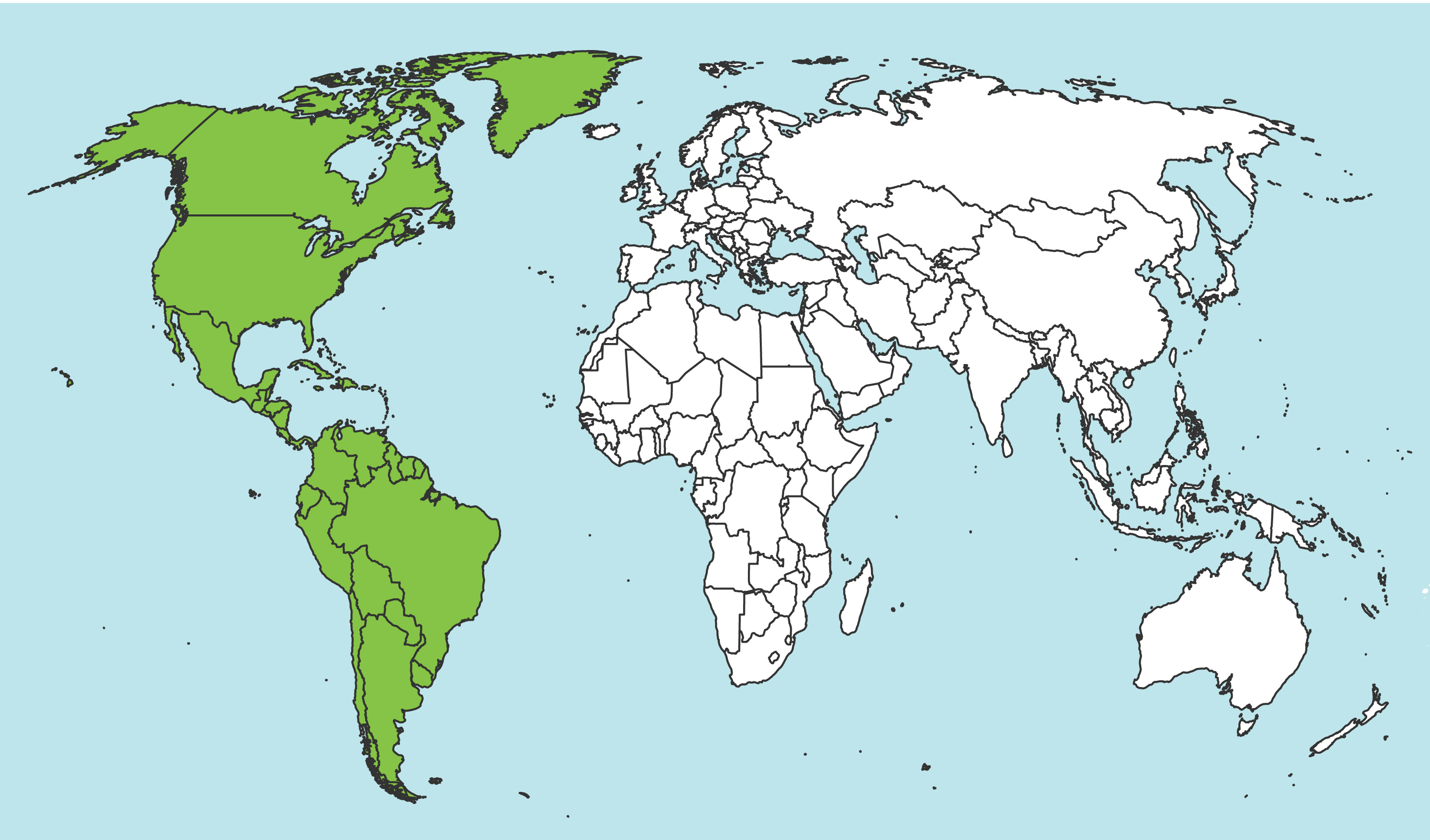 (Taeger et al. 2010Taeger et al. 2010:
(Taeger et al. 2010Taeger et al. 2010:
Taeger A, Blank SM, and Liston AD. 2010. World Catalog of Symphyta (Hymenoptera). Zootaxa 2580: 1-1064.).
A key to the world species of Kulcania are included in Vilhelmsen and Smith 2002Vilhelmsen and Smith 2002:
Vilhelmsen L and Smith DR. 2002. Revision of the lsquo;ophrynopinersquo; genera Argentophrynopus gen. n., Guiglia Benson, Kulcania Benson, Ophrella Middlekauff, Ophrynon Middlekauff, Ophrynopus Konow, and Stirocorsia Konow (Hymenoptera: Orussidae). Insect Systematics amp; Evolution 33 (4): 387-420..
 (Middlekauff 1983Middlekauff 1983:
(Middlekauff 1983Middlekauff 1983: longer than body length and thread-like; when withdrawn, ovipositorovipositor:
longer than body length and thread-like; when withdrawn, ovipositorovipositor: hidden inside of the body, sometimes coiled (Middlekauff 1983Middlekauff 1983:
hidden inside of the body, sometimes coiled (Middlekauff 1983Middlekauff 1983: ; distaldistal:
; distaldistal: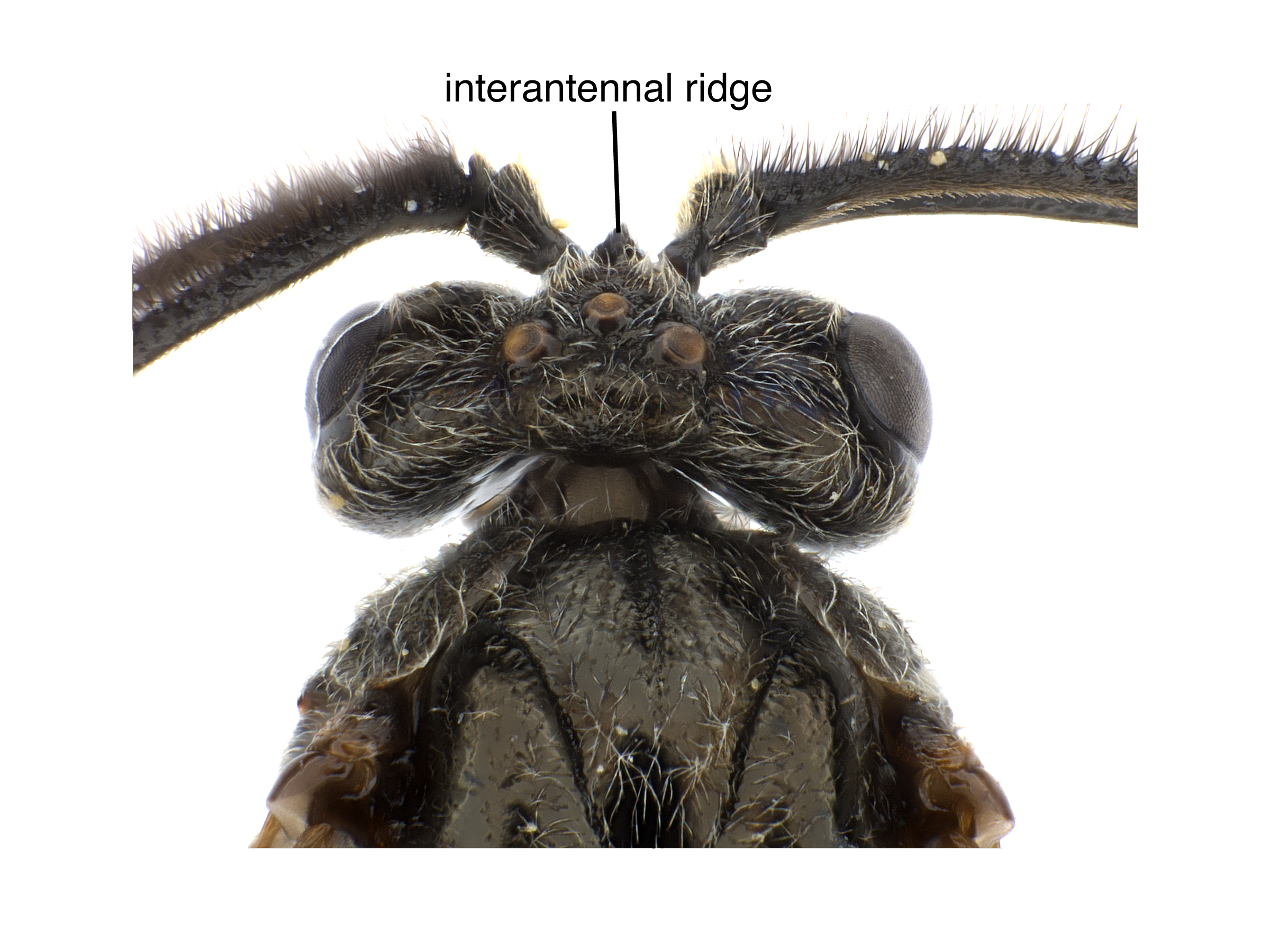 present but not extending far above lower margin of the eye (Vilhelmsen and Smith 2002Vilhelmsen and Smith 2002:
present but not extending far above lower margin of the eye (Vilhelmsen and Smith 2002Vilhelmsen and Smith 2002: on face between the compound eyes distinct (Smith 2006dSmith 2006d:
on face between the compound eyes distinct (Smith 2006dSmith 2006d: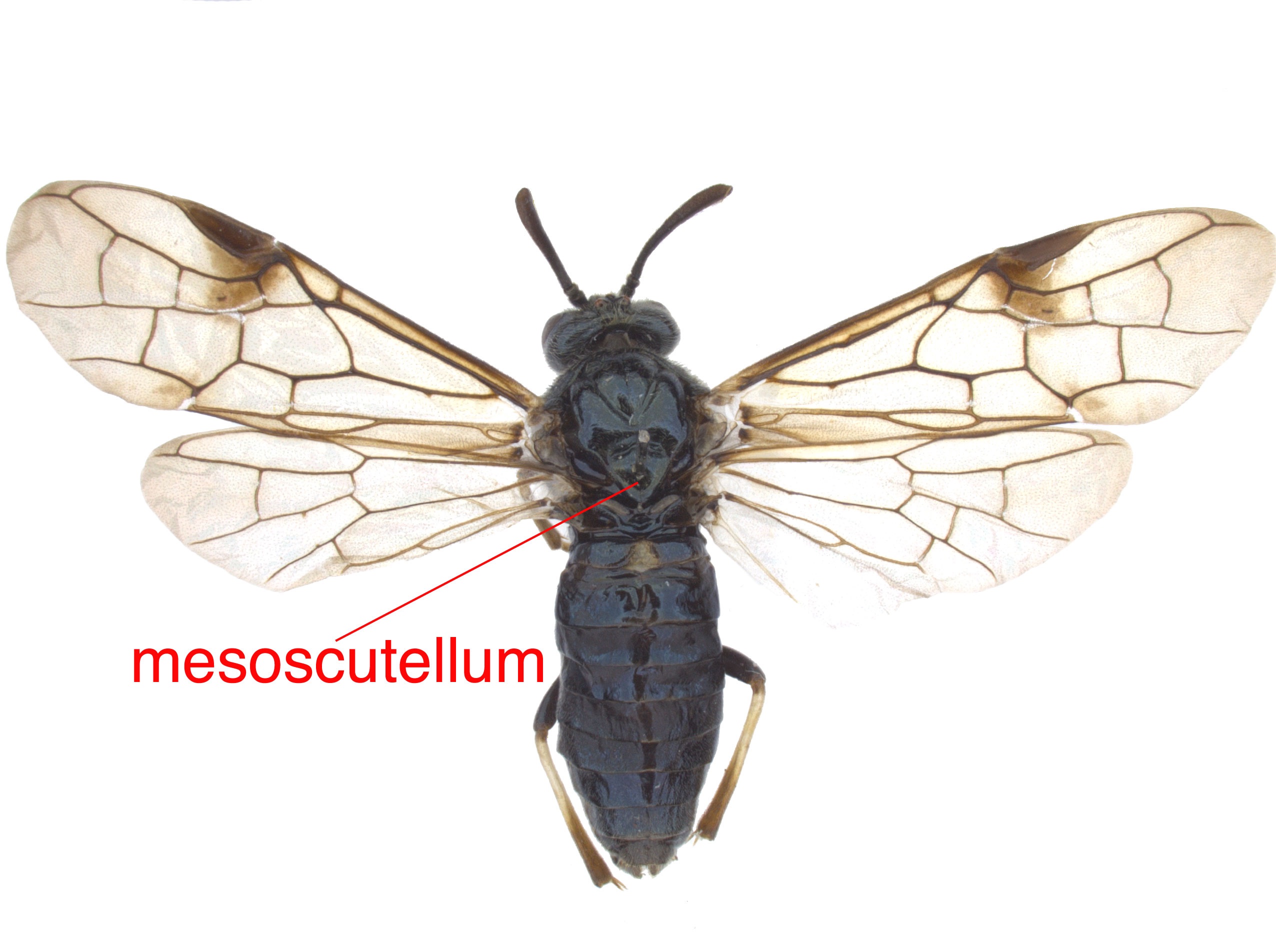 rounded (Smith 2006dSmith 2006d:
rounded (Smith 2006dSmith 2006d: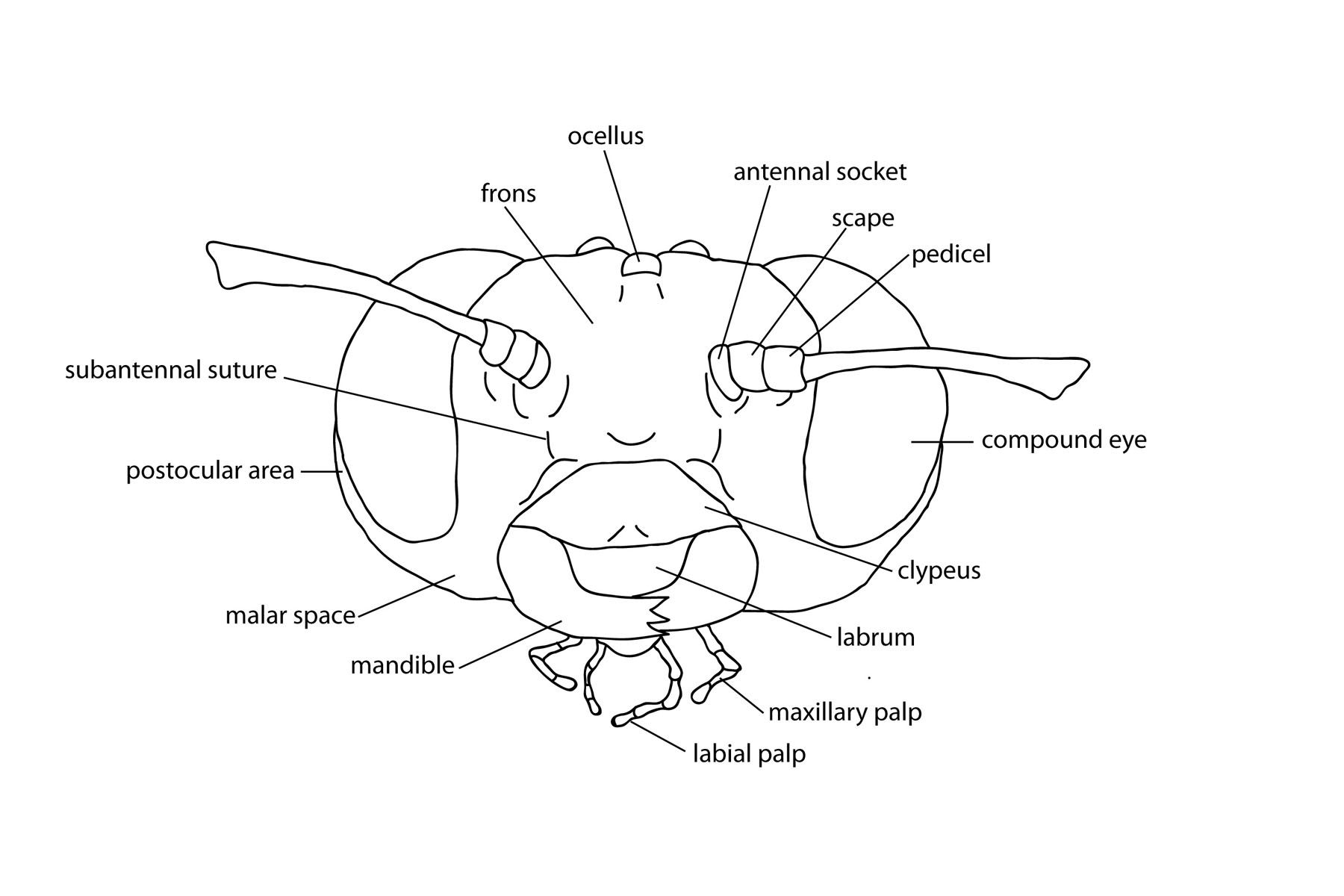 reduced and 3-segmented, much shorter than width of the eye (Smith 2006dSmith 2006d:
reduced and 3-segmented, much shorter than width of the eye (Smith 2006dSmith 2006d: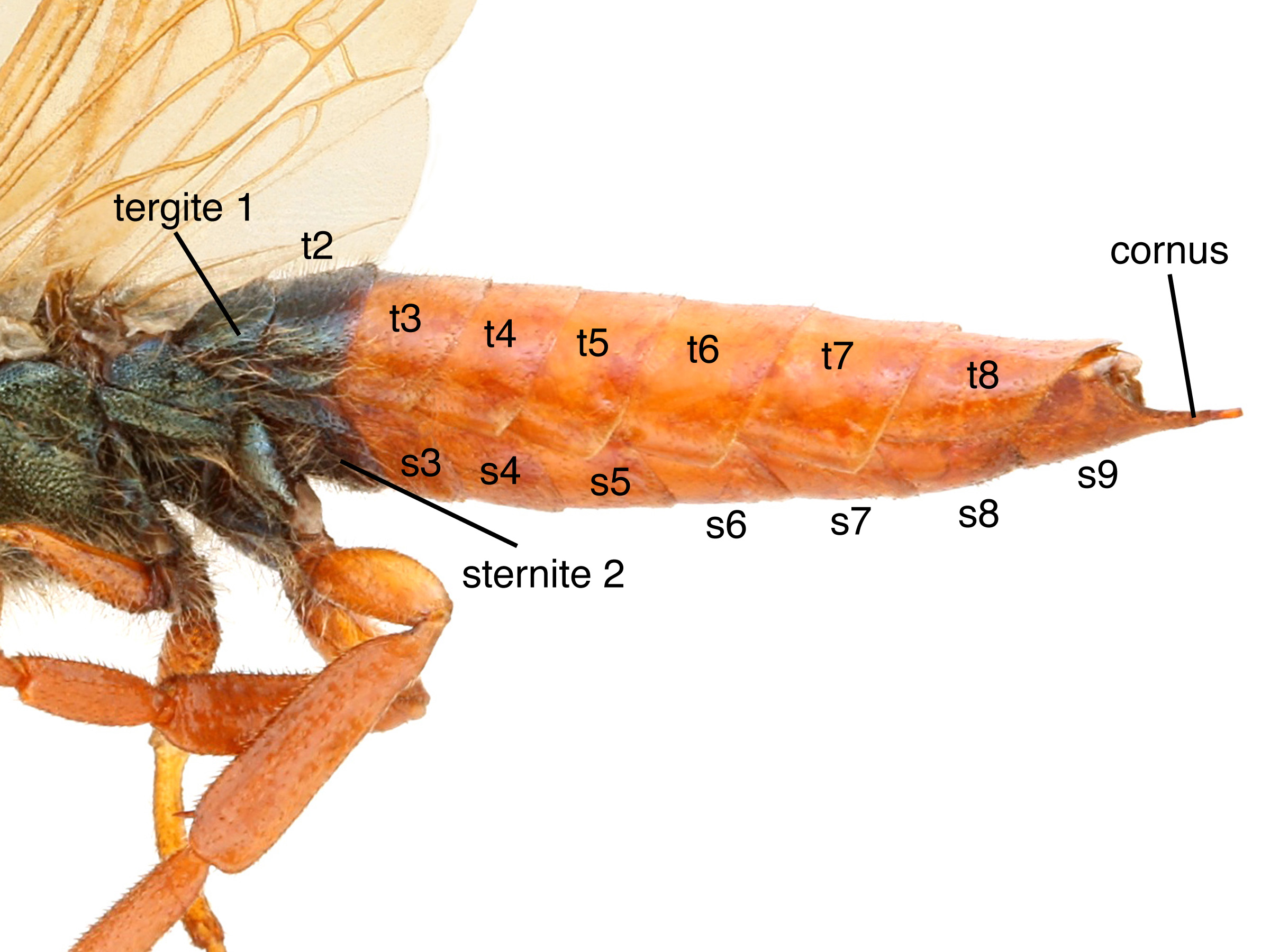 lined with dense fringe of hair (Vilhelmsen and Smith 2002Vilhelmsen and Smith 2002:
lined with dense fringe of hair (Vilhelmsen and Smith 2002Vilhelmsen and Smith 2002:Orussidae are morphologically distinct among sawfly families because of the body shape and location of antennaeantenna:
the sensory organ emerging from the front of the head, usually between the compound eyes and above the clypeus; includes the flagellum, scape and pedicel
 on head. Kulcania, however, can be easily confused with other genera of the family. It can be distinguished by the shape of the mesoscutellummesoscutellum:
on head. Kulcania, however, can be easily confused with other genera of the family. It can be distinguished by the shape of the mesoscutellummesoscutellum:
the anterior section of the scutellum
 , fringe on the first tergitetergite:
, fringe on the first tergitetergite:
a sclerotized segment of the tergum
 , and the short maxillary palpimaxillary palpus:
, and the short maxillary palpimaxillary palpus:
appendage emerging laterally from the maxilla; often segmented
 . Kulcania also has a restricted range in North America (Vilhelmsen and Smith 2002Vilhelmsen and Smith 2002:
. Kulcania also has a restricted range in North America (Vilhelmsen and Smith 2002Vilhelmsen and Smith 2002:
Vilhelmsen L and Smith DR. 2002. Revision of the lsquo;ophrynopinersquo; genera Argentophrynopus gen. n., Guiglia Benson, Kulcania Benson, Ophrella Middlekauff, Ophrynon Middlekauff, Ophrynopus Konow, and Stirocorsia Konow (Hymenoptera: Orussidae). Insect Systematics amp; Evolution 33 (4): 387-420.).
none
The Orussidae are external parasitoids of other insects, however there are currently no host records for Kulcania. One specimen is recorded from Cyrilla racemiflora (swamp titi) in Florida, but it is not known if the insect was just found on the plant or emerging from it (Vilhelmsen and Smith 2002Vilhelmsen and Smith 2002:
Vilhelmsen L and Smith DR. 2002. Revision of the lsquo;ophrynopinersquo; genera Argentophrynopus gen. n., Guiglia Benson, Kulcania Benson, Ophrella Middlekauff, Ophrynon Middlekauff, Ophrynopus Konow, and Stirocorsia Konow (Hymenoptera: Orussidae). Insect Systematics amp; Evolution 33 (4): 387-420.).
The biology of Kulcania species is unknown, as few specimens have been collected and/or observed (Vilhelmsen and Smith 2002Vilhelmsen and Smith 2002:
Vilhelmsen L and Smith DR. 2002. Revision of the lsquo;ophrynopinersquo; genera Argentophrynopus gen. n., Guiglia Benson, Kulcania Benson, Ophrella Middlekauff, Ophrynon Middlekauff, Ophrynopus Konow, and Stirocorsia Konow (Hymenoptera: Orussidae). Insect Systematics amp; Evolution 33 (4): 387-420.). For a description of the life history of a closely related sawfly in the Orussidae, see Orussus.
World: Outside of North America, Kulcania is only recorded in Columbia in South America (Fernandez 1995Fernandez 1995:
Fernandez F. 1995. La diversidad de los Hymenoptera en Colombia. Pp. 373-442. In: Rangel JO, ed. Colombia diversiadad biotica 1. Universidad Nacional de Colombia y Inderena. Santafe de Bogota, Columbia.).
North America: Kulcania occurs in Costacosta:
the robust vein on the anterior margin of the wing; vein C
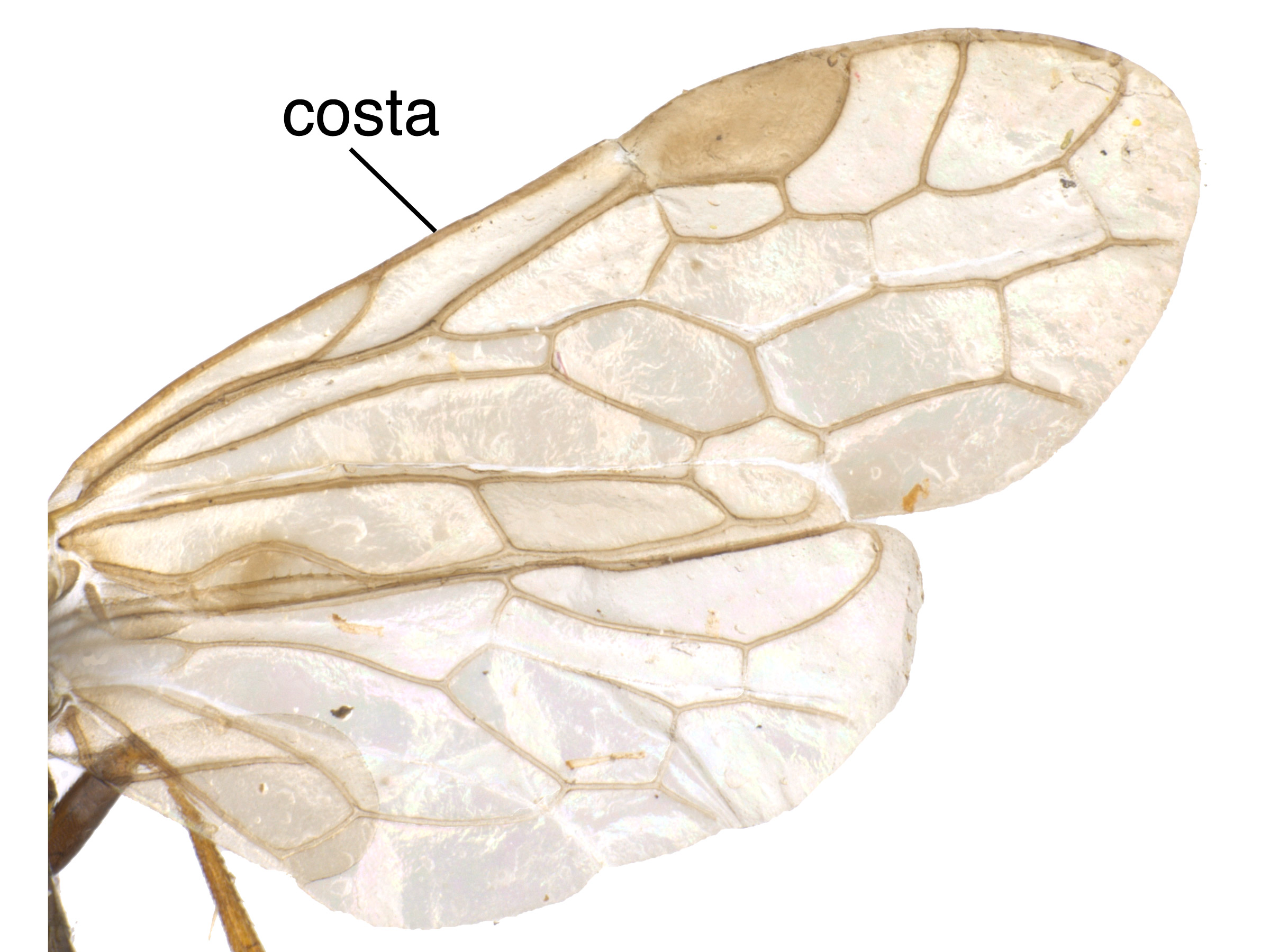 Rica, Mexico, and the southern United States (Vilhelmsen et al. 2013Vilhelmsen et al. 2013:
Rica, Mexico, and the southern United States (Vilhelmsen et al. 2013Vilhelmsen et al. 2013:
Vilhelmsen L, Blank SM, Costa VA, Alvarenga TM, and Smith DR. 2013. Phylogeny of the ophrynopine clade revisited: review of the parasitoid sawfly genera Ophrella Middlekauff, Ophrynopus konow and Stirocorsia konow (Hymenoptera: Orussidae). Invertebrates Systematics 27: 450-483. https://doi.org/10.1071/IS13006).
Map data from the Smithsonian National Museum of Natural History (USNM)
Details about data used for maps can be found here.